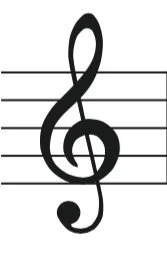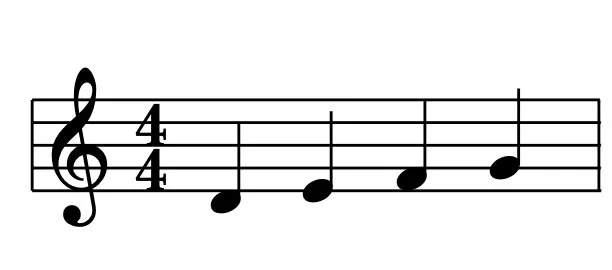Reading Music
Welcome to the world of reading music! The symbols on the page may seem confusing, but they create a clear system. This system helps musicians with different instruments play together in harmony, connecting people through the joy of music.
There are Only 7 Notes
Music is based on seven distinct notes: A, B, C, D, E, F, and G. Each note has its unique character and can be played in various pitches, creating different emotions. For example, the combination of A and B can produce a dissonant clash. Musicians skillfully weave these notes into intricate melodies and harmonies.
Music is a Grid System
Music functions as a grid system that guides musicians in three key areas: which notes to play, when to play them, and for how long. Notes are combined at different times to create a rich tapestry of sound.
Score
A score as a blueprint that integrates each instrument's unique part, ensuring harmony while highlighting individual voices within the ensemble.
Treble Clef
Placing all musical notes on the staff grid at once would create chaos, making it impossible to read. To maintain clarity, the lines are segmented based on the instrument's pitch range, and a symbol called a Clef is put at the beginning of the music to indicate what kind of instrument should play this music. The violin uses the Treble Clef.
Tempo
Tempo determines the speed at which music is played. It can be fast or slow, with the notes remaining the same, just played at a different pace.
Pulse
The pulse of the music is a rhythmic heartbeat that unites listeners and performers, establishing a tempo that allows melodies and harmonies to flourish. This steady beat invites everyone to sway and move together, creating a shared musical experience.
Measure
To maintain rhythm and clarity, music is organized into measures. Each measure is separated by a bar line, marking the end of one segment and the start of another, helping musicians stay in sync.
Time Signature
The time signature tells us two very important things. The top of the time signature tells us how many pulses or beats per measure, and the bottom tells you what note gets the beat.



